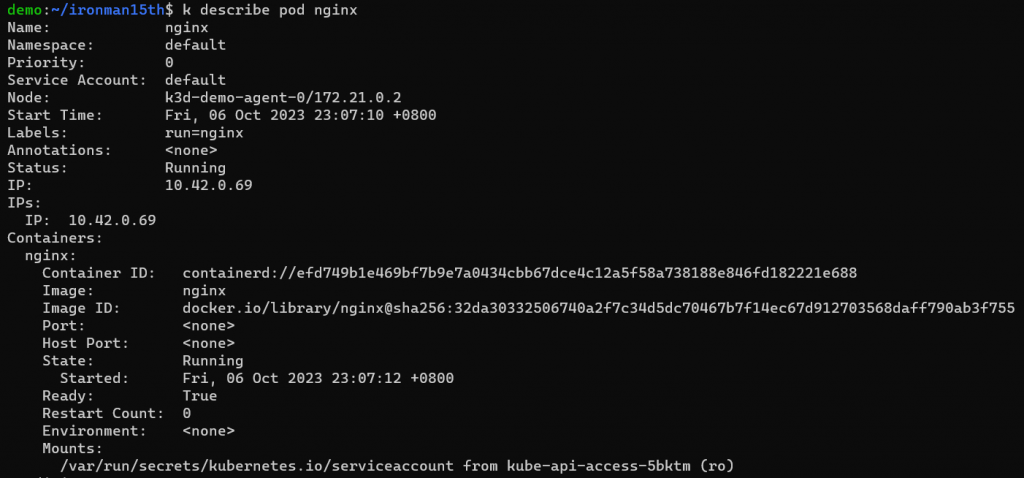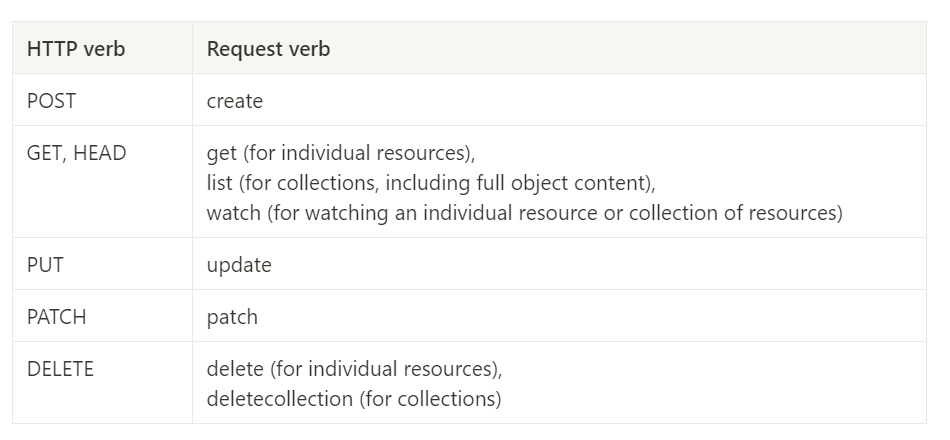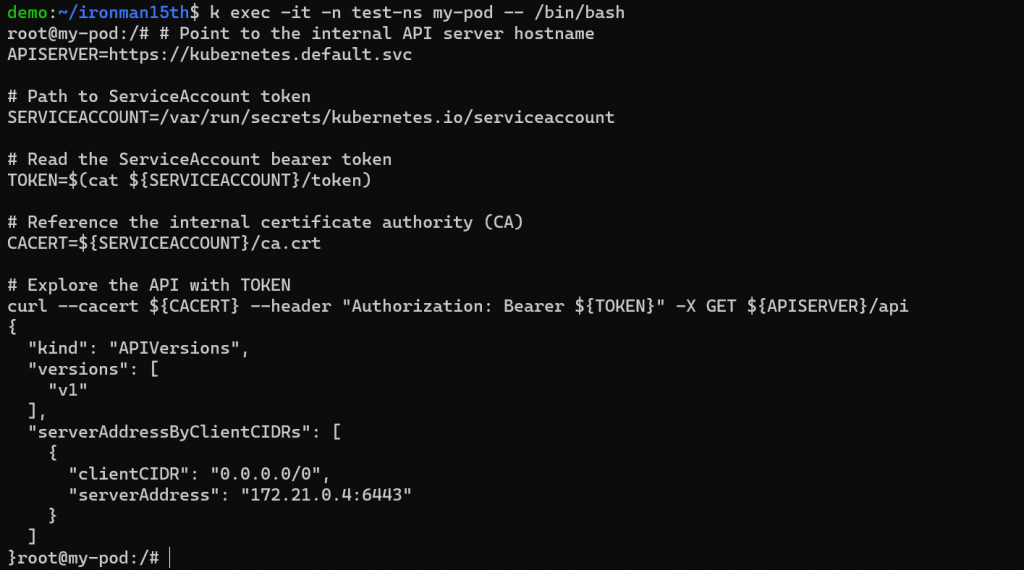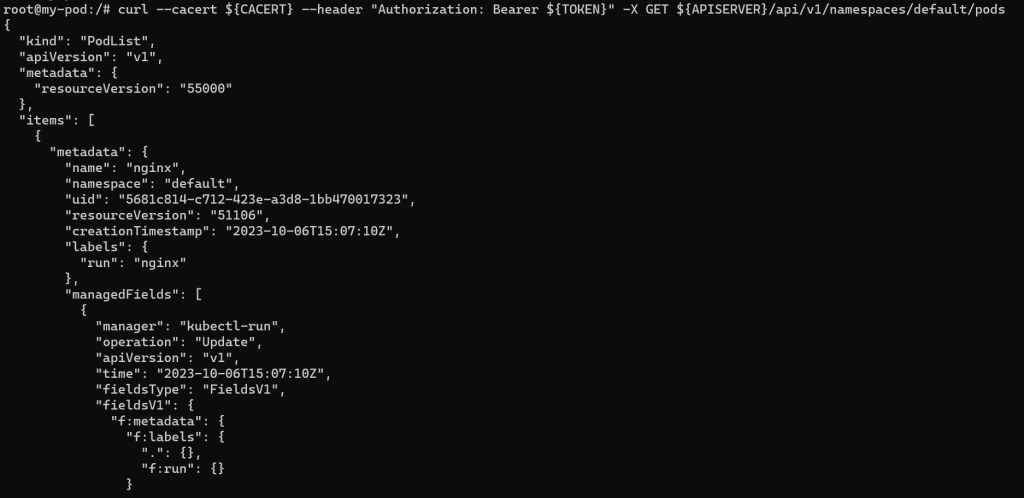類似雲端服務,Kubernetes 的資源也會限制存取對象。不過在本機上練習 kubernetes 會沒什麼感覺,因為你就是 admin。
回顧一下非常前面提到的 Cluster structure,Cluster 中會有 API server,使用者 (我) 利用 kubectl 可以列出有哪些 Pods、可以建立新的資源、更改或刪除資源;或是透過 API 做這些操作。但要做這些操作是需要權限的。而在確定這個請求是可以被執行之前,首先要先知道你是誰 (Authentication)。
在 Kubernetes 中進行 Authentication 的形式有很多種,例如 static token files、X.509 certificates、OpenID、Service Account。不過這篇只會介紹 Service Account - 先從 Kubernetes Object 開始理解。
在 Day3 建 Dashboard 的時候有提到,Service Account 也是 Kubernetes Object 的一種。概念上這個 Account 與 User 類似,只是 Service Account 是給機器 (或某個應用程式) 用的。在什麼情況下會需要讓應用程式去對 Pods、Deployment etc 做操作?例如 Prometheus 會透過 Service Account 跟 Kubernetes API 拉 metrics、自動化工具 (Jenkins, GitLab) 使用 Service Account 來部署應用程式到 Kubernetes Cluster 中。
在每個 Namespace 被建立時,都會有一個預設的 Service Account 被建立。可以透過 kubectl get sa -n <namespace> 觀察到 -
如果要建立 Service Account 可以用以下指令 -
# kubectl create serviceaccount <name>
kubectl create serviceaccount test-sa
kubectl create sa test-sa
或是 YAML
apiVersion: v1
kind: ServiceAccount
metadata:
name: test-sa
namesapce: test-ns
從 spec 中可以得知 Service Account 是 Namespaced Object。那這個 Service Account 要怎麼用?建立完 Service Account 後,會再透過 Authorization 的機制給予權限,然後建立 Pod 的時候指定Service Account。如果沒有指定的話新建的 Pod 會自動 Assign default Service Account。
如果要指定,可以在 Pod spec 加上 serviceAccount
apiVersion: v1
kind: Pod
metadata:
name: my-pod
namesapce: test-ns
spec:
containers:
- name: my-pod
image: my-image
serviceAccountName: test-sa
那具體來說,到底 API server 是怎麼認得這個 Service Account 的呢?
當 Service Account 被 Assign 給 Pod,Kubernetes 預設會將 Service Account Token 分給這個 Pod,Token 會被 mount 進 Pod 內部的 /var/run/secrets/kubernetes.io/serviceaccount 之中 -
也可以從 describe 資訊中看到
當使用 Service Account 的 Pod 向 API server 發送請求的時候,會帶有 Authorization Header,其中會有 Bearer token 的值,讓 API server 辨識。
如果不希望 token 自動被 mount 進 Pod 中,在 spec 中可以將 automountServiceAccountToken 設為 false
apiVersion: v1
kind: Pod
metadata:
name: my-pod
namesapce: test-ns
spec:
containers:
- name: my-pod
image: my-image
serviceAccountName: test-sa
automountServiceAccountToken: false
後面會實作這個 Token 是怎麼使用。
Kubernetes authorization 的模式有幾種 -
這篇主要講 RBAC。如果要使用 RBAC 的模式需要啟用 rbac.authorization.k8s.io API group。
Role 這個 Object 會定義這個角色可以做什麼事,例如下面的例子 - developer 這個 Role 可以看到有哪些 Pods、可以建立/更新/刪除 Pods,可以建立 ConfigMap。而沒有提到的資源、沒有定義到的動作,這個 Role 就沒有權限執行。
apiVersion: rbac.authorization.k8s.io/v1
kind: Role
metadata:
name: developer
rules:
- apiGroups: [""]
resources: ["pods"]
# resourceNames: ["blue", "orange"]
verbs: ["list", "get", "create", "update", "delete"]
- apiGroups: [""]
resources: ["ConfigMap"]
verbs: ["create"]
Spec 中 rules 的部分可以分別列不同種的資源,其中
apiGroups : 要寫說是哪個 API Group 的對象,如果是 Core group 可以留白 (例如 Pods)
resources : 可以操作的資源,如果只想限定某些特定的資源,例如名字是 blue & ornage 的 Pod,可以用 resourceNames 限定
verbs : 能夠對資源做什麼操作,有哪些動詞可以用可以看這篇 - https://kubernetes.io/docs/reference/access-authn-authz/authorization/#determine-the-request-verb
定義好角色之後,就要將 account 與 role 綁定起來,這時就會用到 RoleBinding 這個 Object -
apiVersion: rbac.authorization.k8s.io/v1
kind: RoleBinding
metadata:
name: developer-binding
subjects:
- kind: ServiceAccount
name: test-sa
apiGroup: ""
namespace: test-ns
roleRef:
kind: Role
name: developer
apiGroup: rbac.authorization.k8s.io
subjects 對象,可以想成這邊就是指定 account
kind : "User", "Group", or "ServiceAccount”apiGroup : 關聯的這個 subject 所屬的 API group,如果是 ServiceAccount,它屬於 Core API,值為 “”;如果是 User or Group,值會是 "rbac.authorization.k8s.io"namespace : User & Group 不是 namespaced object,不用加;Service Account 要填是在哪個 Namespace 的 SA這邊可以綁很多個 subjects 給同一個 Role
roleRef 則是要綁定的 Role
kind : 可以放 Role 或是 ClusterRoleapiGroup : "rbac.authorization.k8s.io"以下來實作在 Pod 裡面 access kube API server,列出 default Namespace 之中的 Pods
執行以下的 yaml -
apiVersion: v1
kind: ServiceAccount
metadata:
name: test-sa
namespace: test-ns
---
apiVersion: v1
kind: Pod
metadata:
name: my-pod
namespace: test-ns
spec:
containers:
- name: nginx
image: nginx
serviceAccountName: test-sa
---
apiVersion: rbac.authorization.k8s.io/v1
kind: Role
metadata:
name: developer
rules:
- apiGroups: [""]
resources: ["pods"]
verbs: ["list", "get", "create", "update", "delete"]
- apiGroups: [""]
resources: ["ConfigMap"]
verbs: ["create"]
---
apiVersion: rbac.authorization.k8s.io/v1
kind: RoleBinding
metadata:
name: developer-binding
subjects:
- kind: ServiceAccount
name: test-sa
apiGroup: ""
namespace: test-ns
roleRef:
kind: Role
name: developer
apiGroup: rbac.authorization.k8s.io
my-pod & Service Account test-sa 在 test-ns 這個 namespace指令的部分參考 https://kubernetes.io/docs/tasks/run-application/access-api-from-pod/
The API server's in-cluster address is also published to a Service named
kubernetesin thedefaultnamespace so that pods may referencekubernetes.default.svcas a DNS name for the local API server.
進去 Pod 之中,向 kubernetes.default.svc 發 Request,並帶上 token
# Point to the internal API server hostname
APISERVER=https://kubernetes.default.svc
# Path to ServiceAccount token
SERVICEACCOUNT=/var/run/secrets/kubernetes.io/serviceaccount
# Read the ServiceAccount bearer token
TOKEN=$(cat ${SERVICEACCOUNT}/token)
# Reference the internal certificate authority (CA)
CACERT=${SERVICEACCOUNT}/ca.crt
# Explore the API with TOKEN
curl --cacert ${CACERT} --header "Authorization: Bearer ${TOKEN}" -X GET ${APISERVER}/api

得到回應,通常 API server 開的 port 是 6443,172.21.0.4 是 control-plane 的位置

再來測試兩個請求
${APISERVER}/api/v1/namespaces/default/pods
${APISERVER}/api/v1/namespaces/default/services
在外頭用 kubectl 操作可以得到以下結果,因為是 Admin 想看什麼都行
在 Pod 中因為綁定的 Service Account 只能列出 default namespace 的 Pods,當發請求說要 GET services 時就會被禁止
(pods list 資訊太長只截部分,可以自己測試如果用 default SA 能不能得到 pods list)
Services 的部分 = 403
另外補充,透過 kubectl proxy 可以直接在 host access api server -
kubectl proxy --port=8080 &
curl http://localhost:8080/api/
但這只是方便開發跟測試,不建議用在正式環境
連假的開始就是寫文章。只好水一下內容,ClusterRole 放在明天 QQ
Reference
https://kubernetes.io/docs/concepts/security/service-accounts/
https://kubernetes.io/docs/reference/access-authn-authz/authorization/
https://kubernetes.io/docs/reference/access-authn-authz/authentication/
https://kubernetes.io/docs/tasks/run-application/access-api-from-pod/
https://kubernetes.io/docs/tasks/configure-pod-container/configure-service-account/
https://stackoverflow.com/questions/52995962/kubernetes-namespace-default-service-account
https://pwittrock.github.io/docs/tasks/administer-cluster/access-cluster-api/
